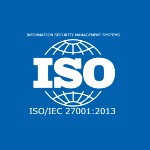CVS – Aetna: The Power of Strategic Competitive Analysis
Posted by | Fuld & Company

In October 2017, the Wall Street Journal and other sources revealed that pharmacy operator CVS Health Corporation had made an offer to acquire No. 3 health insurer Aetna Inc. Wouldn’t it have been rewarding to have known the probability of such an acquisition? Wouldn’t executives of Walgreens and Express Scripts or United Health Group and Anthem have benefited from an evaluation that showed the rationale for such an acquisition? Fuld & Company analysis produced in June 2017 did precisely that. Anticipating just such a move four months ago demonstrates of the power of competitive strategy.
Of course, it had been publicly known that Aetna has a contract with CVS Health that runs through 2019. Senior executives even mentioned during quarterly earnings calls that the two companies were considering expanded collaboration, especially on CVS Minute Clinic, home infusion, long-term care and other services. And consolidation has been speculated throughout the healthcare system, which is under pressure from the government, businesses, and patients to lower soaring medical and insurance costs.
Yet, to envisage, with some precision, a CVS-Aetna merger is not simply a heedless extension of that relationship. It is instead a strategic analysis produced through the application of powerful competitive strategy techniques.
The best practitioners of competitive strategy—those most skilled at identifying early warning signals of events that can change their world—always take the broadest possible view. They collaborate with specialists in a wide variety disciplines and they evaluate the fullest range of possible influences: political, social, technological, environmental, legislative, and economic. Then they reach the critical step: finding what is significant in all that information. The effort requires skill and perseverance—and a certain way of thinking that can be called an “art.”
Fuld & Company consultants often undertake this work through real-time simulations, sometimes called war games, or through other methodologies including the development of scenarios. Our analysis of Healthcare Scenarios in a Trump World: The Future of the Affordable Care Act and Its Impact on Business Strategy is an example of the latter technique. Both simulation and scenario methods identify a wide diversity of factors at work in the environment, create scenarios that may arise as the result of those circumstances, and pinpoint critical success factors for executives’ attention. In essence, these and other competitive strategy techniques provide solid foundations upon which to analyze the myriad of factors that drive human behavior that, in turn, drives corporate action.
Through our work with senior corporate executives, we have found that what they want and need are structured frameworks to develop flexible and robust strategies that are tested against a broad range of future industry conditions. From there, they and their teams can build and implement a set of strategic actions that provide competitive advantage through appropriate points of differentiation. Through the creation of early warning systems, they can link their strategic imperatives to on-going market conditions and track risks, rewards, and opportunities.
Understanding these strategic methodologies and their application doesn’t always result in precise predictions such as our expectation of a CVS acquisition of Aetna.
But competitive strategy provides executives with a fundamental structure for anticipating a range of competitor actions. An art that executives across the pharmacy, healthcare, and health insurance industries would do well to immediately embrace.
Tags: Aetna, CVS, Early Warning & Monitoring, Healthcare & Life Sciences, Market Analysis, Mergers & Acquisition, Payer, Provider, Strategic Planning, War Gaming



















